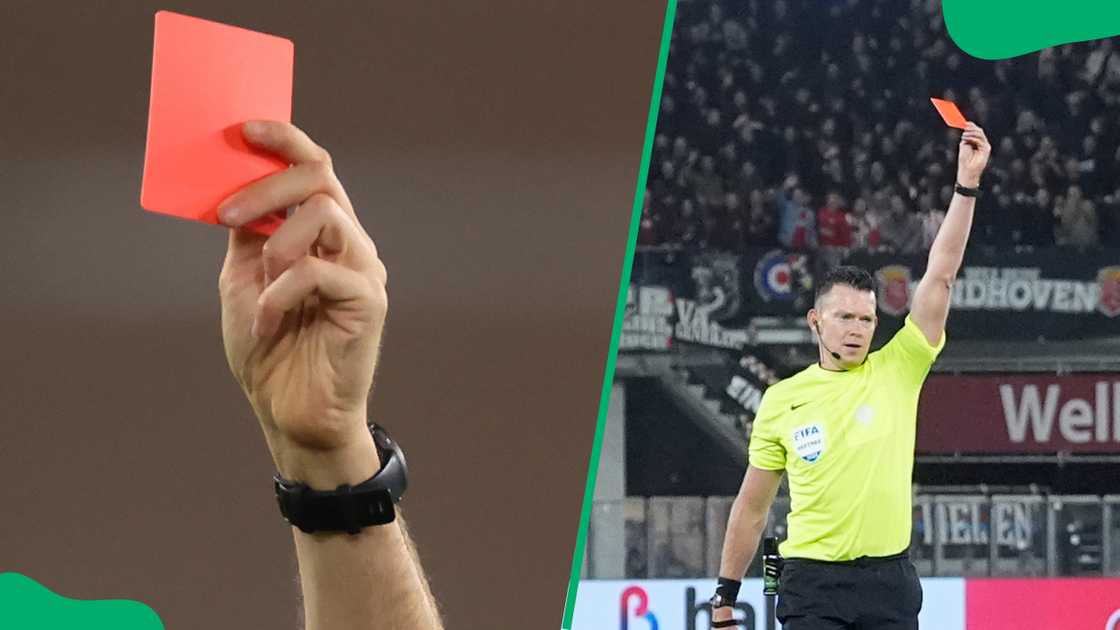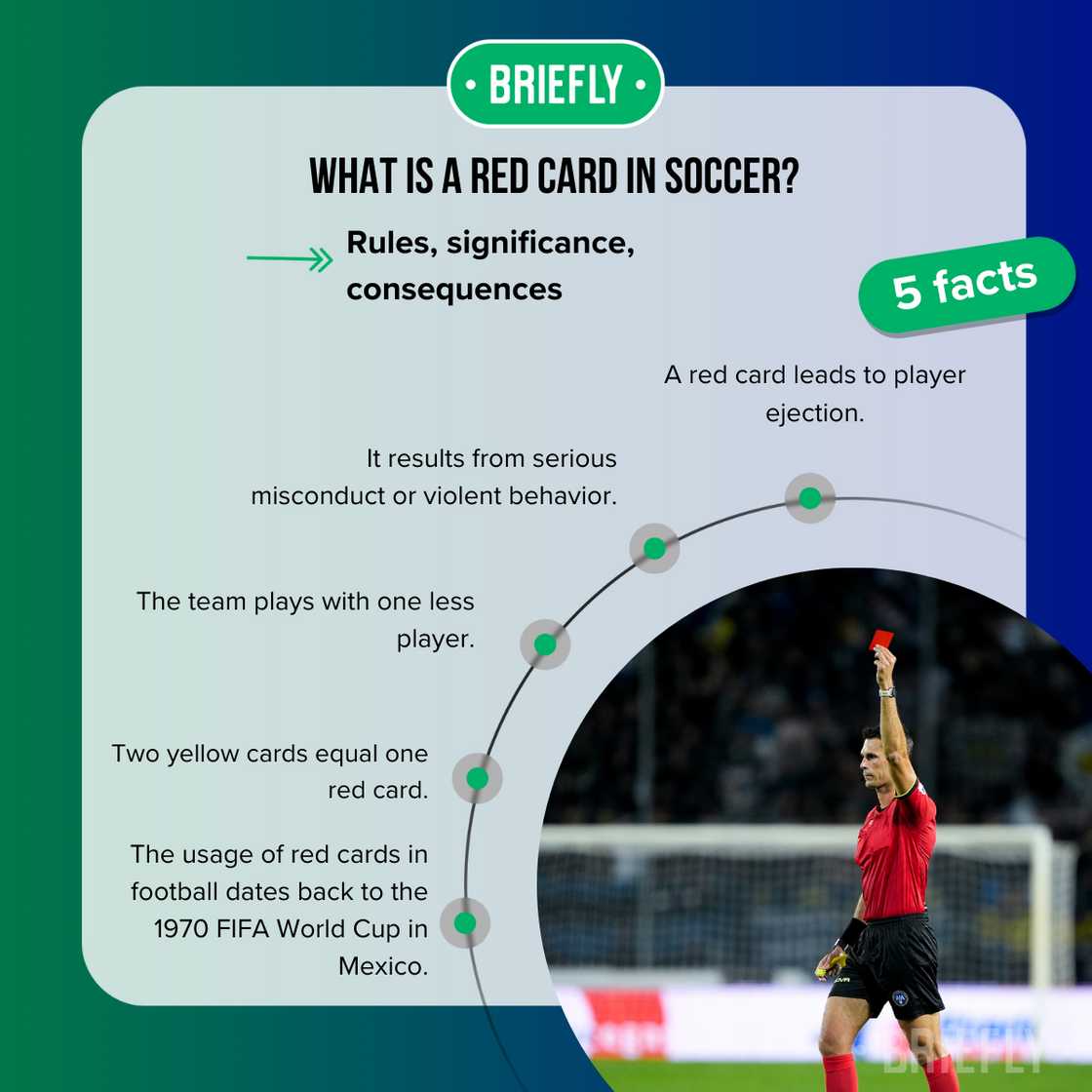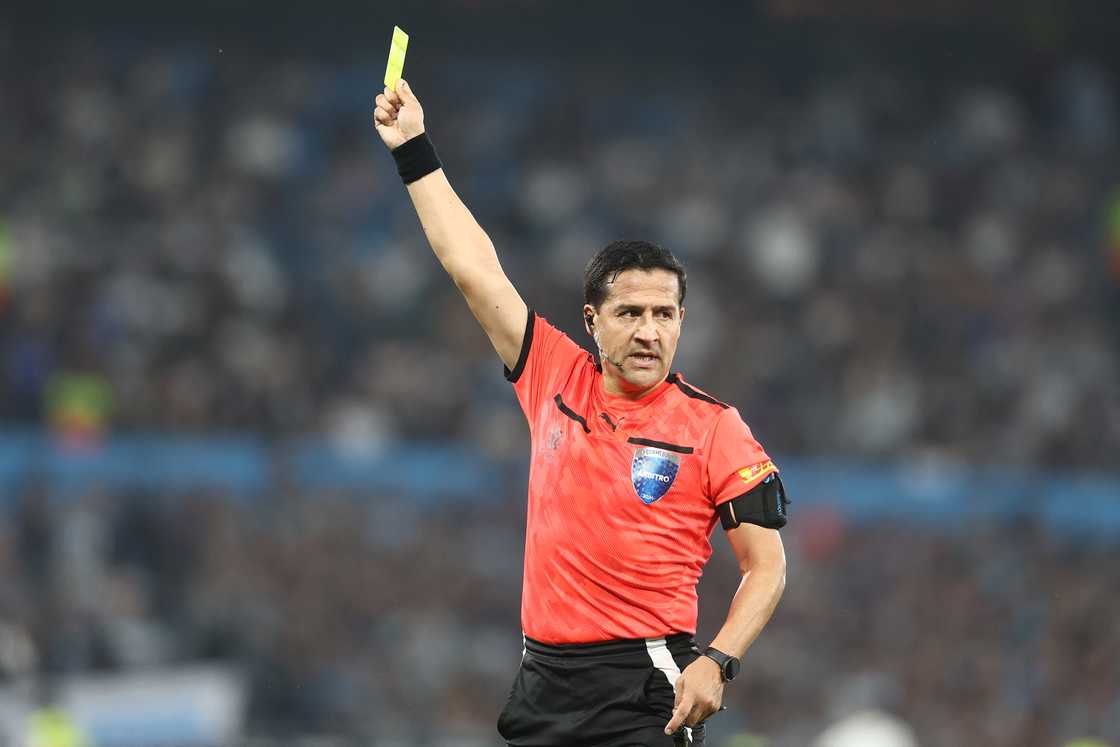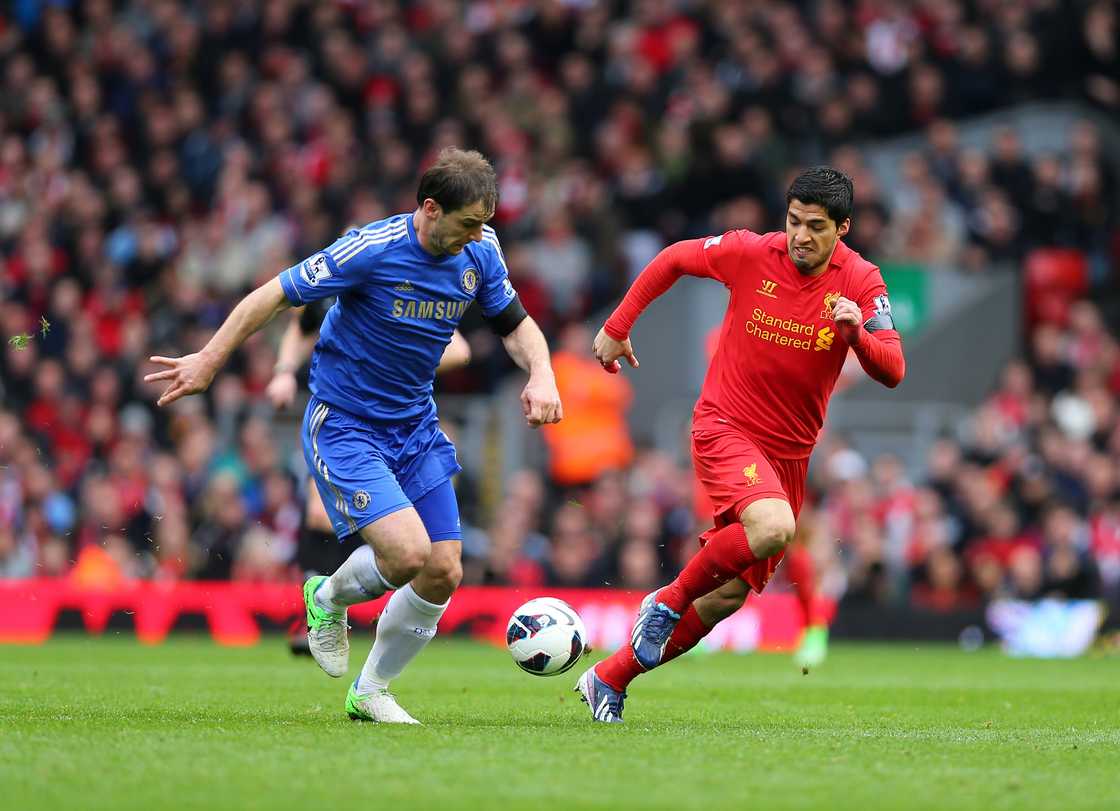What is a red card in soccer? Rules, significance, consequences
Soccer is one of the world's most popular sports, known for its fluid gameplay, tactical genius, and exciting goal-scoring opportunities. While the game frequently honours moments of brilliance and teamwork, it also has rigid regulations that assure fairness, discipline, and respect. Today, we will look at the significance of a red card in soccer and what it implies.

Source: Getty Images
TABLE OF CONTENTS
It is a potent symbol used by referees to punish players for significant wrongdoing. In this post, we will go over the definition of a red card in soccer, how it differs from a yellow card, and the ramifications for players and teams.
What is a red card in soccer?
It is one of the harshest punishments a player may receive during a game. The official Football Association website states it indicates that the player has violated the rules significantly and should be removed from the field immediately.
When a player receives this send-off signal, they must immediately leave the field of play and are not permitted to reenter the game. Unlike other fouls, a red card has far-reaching consequences for the game and even future matches.
The usage of red cards in football dates back to the 1970 FIFA World Cup in Mexico. They were used to help players and spectators comprehend the referees' judgments.

Source: Original
Red card soccer rules
The sport's governing body, the International Football Association Board (IFAB), establishes the rules surrounding red cards in soccer. According to the IFAB, players can be dismissed for several reasons, including but not limited to:
- Serious foul play: This includes dangerous tackles, reckless challenges, and any other play that could cause injury to another player.
- Violent conduct: Actions such as striking, kicking, or any other attempt to harm an opponent—whether the ball is in play or not—fall under violent conduct and warrant immediate dismissal.
- Spitting at someone: Spitting at another person during the game period is deemed extremely rude and will result in an immediate dismissal. For example, according to The Guardian, Borussia Mönchengladbach attacker Marcus Thuram was suspended for six games and fined $43,523 for spitting in the face of Hoffenheim defender Stefan Posch during a Bundesliga game.
- Denying a goal-scoring opportunity: If a player denies the opposing team an apparent goal-scoring opportunity by committing an intentional foul or handball, they may be sent off, as was the case with Luis Suárez against Ghana in the 2010 World Cup.
- Offensive language or gestures: Using insulting or abusive language or gestures toward players, officials, or fans can also result in dismissal.
- Second yellow card: If a player receives two yellows in the same match, they are then shown a red and must leave the field.
Yellow card vs red card
If a player receives a yellow card in soccer, it means a word of caution, whereas the red card means immediate dismissal. A red-carded person cannot be replaced, meaning the team must play with one fewer player for the remainder of the match.

Source: Getty Images
How long does a red card last?
According to Sporting News, a player sent off for two yellow cards in the Premier League receives an automatic one-game suspension. A straight red card normally results in a three-game suspension, which may be modified based on the gravity of the incident, particularly in cases of violent behaviour.

Source: Getty Images
Because most leagues adhere to IFAB (International Football Association Board) norms, the rules are largely consistent among major leagues. In some cases, one can appeal the judgment, and if they are successful, their suspension may be lifted, allowing them to play in the next match.
Controversies surrounding red cards
Inconsistencies in the enforcement raise concerns about the need for better officiating standards. Many such incidents occur when referees miss clear violations on the field. Here are a few examples:
In a critical encounter in 2010's Carling Cup, Manchester United's Nemanja Vidić fouled Gabriel Agbonlahor to block a clean goal-scoring opportunity but only received a yellow. Aston Villa was given a penalty. This decision irritated rival fans, and Sir Alex Ferguson admitted the near call, according to BBC reports:
"We got a lucky break; he could have been sent off."
Luis Suárez's biting episodes with Otman Bakkal, Branislav Ivanovic, and Giorgio Chiellini provoked heated debate concerning officiating consistency due to the lack of early red cards. TalkSport said that if VAR had been in existence, Suárez would have received a straight red, notably for his bite on Ivanovic.

Source: Getty Images
Famous players with the most red cards in football history
Beyond influencing the outcome of a single game, red cards have made an indelible impression on some of soccer's most famous players. These players include:
- Gerardo Bedoya: The Colombian defender, nicknamed "the beast," has the most red cards in football history, with 46. He spent the majority of his career playing in South America, garnering 49 caps for his country.
- Sergio Ramos: One of the most well-known in recent years, Ramos has received 29 red cards throughout his career in La Liga, Ligue 1, and the Champions League. On September 18, 2005, he received his first red in Real Madrid's 1-0 loss to Espanyol.
Frequently asked questions
The red card ensures fair play by penalising harmful behaviour, but it also reminds players of the value of self-control and sportsmanship. Here are popular questions about the card:
- How many games do you miss if you get a red card? At least one game.
- Does a red card in soccer mean you play a man down? Yes, it means the team must play with one fewer player since substitutions are not allowed to replace a player who has been sent off.
- What happens if a goalkeeper is sent off? If the team has not used all its substitutions, it must then bring on a substitute goalkeeper by removing one outfield player; if all substitutions are already used, an outfield player will take on the goalkeeper role for the rest of the match.
The red card in soccer is one of the most powerful disciplinary tools. It impacts the immediate match and influences the team's strategy, future games, and even the broader course of a season.
READ ALSO: English soccer pyramid system: Easy breakdown of football tiers
Briefly published an article about the English soccer pyramid system. The system, known for its extreme depth and complexity, is a unique structure that allows clubs to climb up or move down the tiers. It is also known as the English Football League system.
Source: Briefly News






